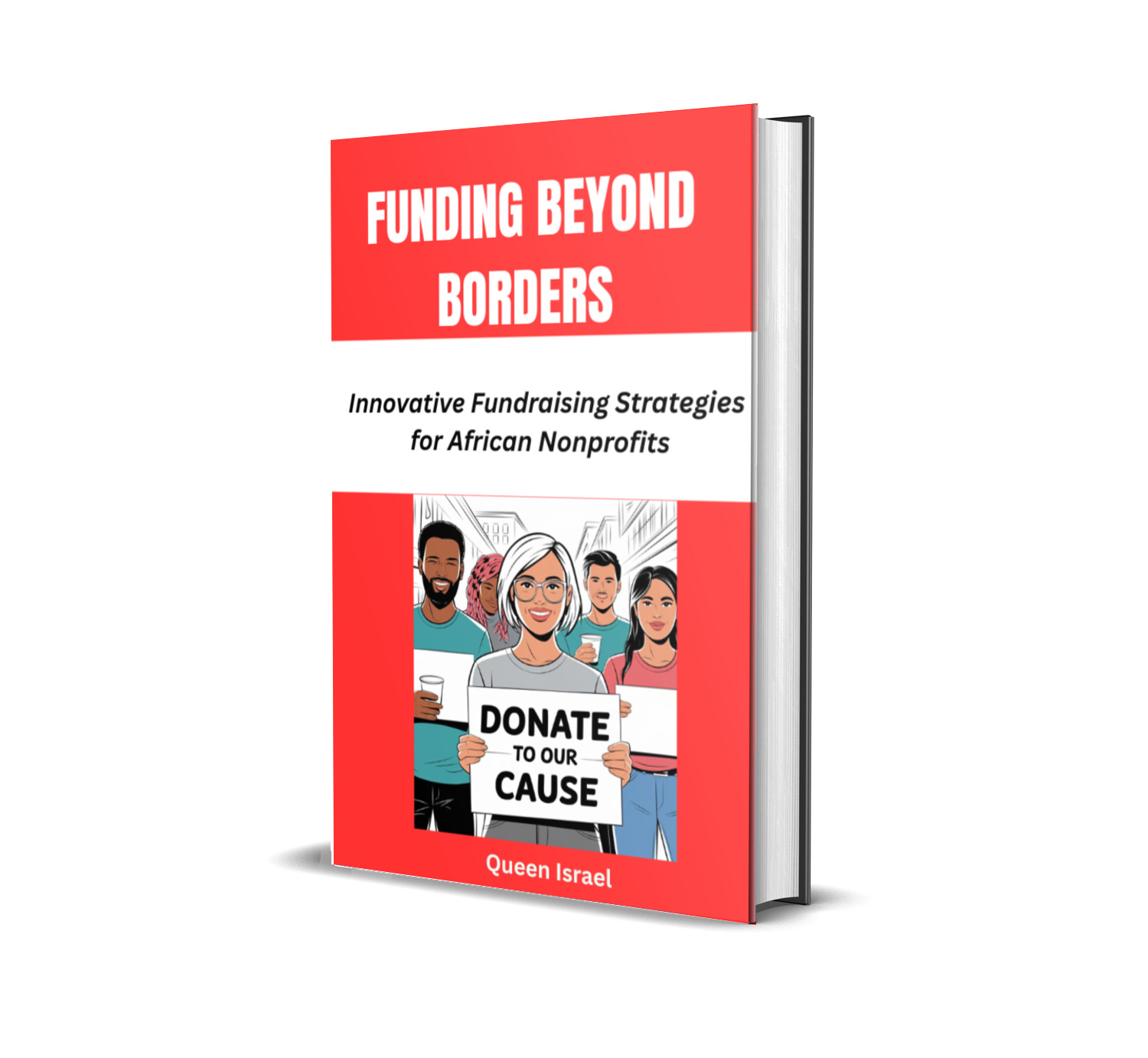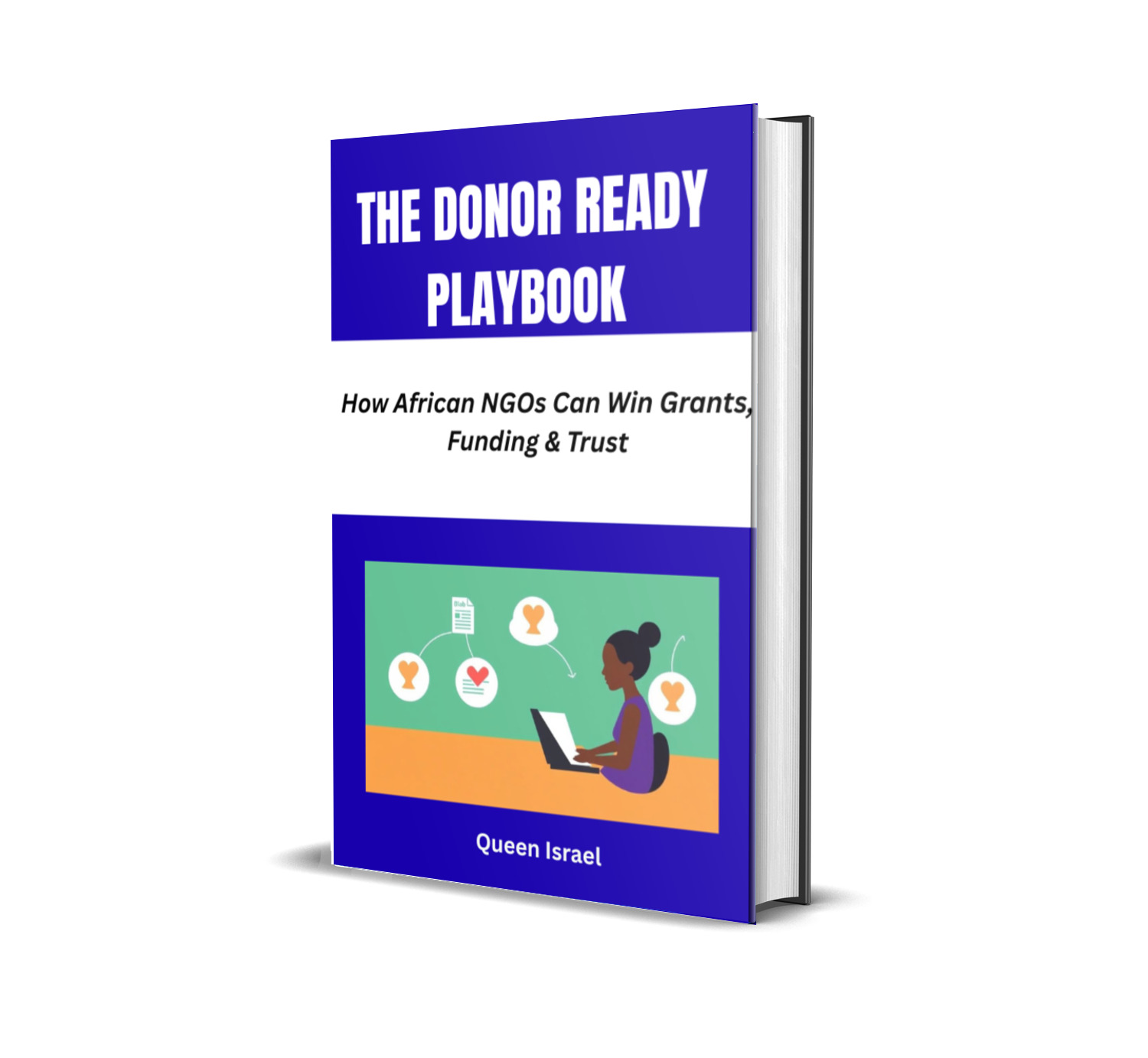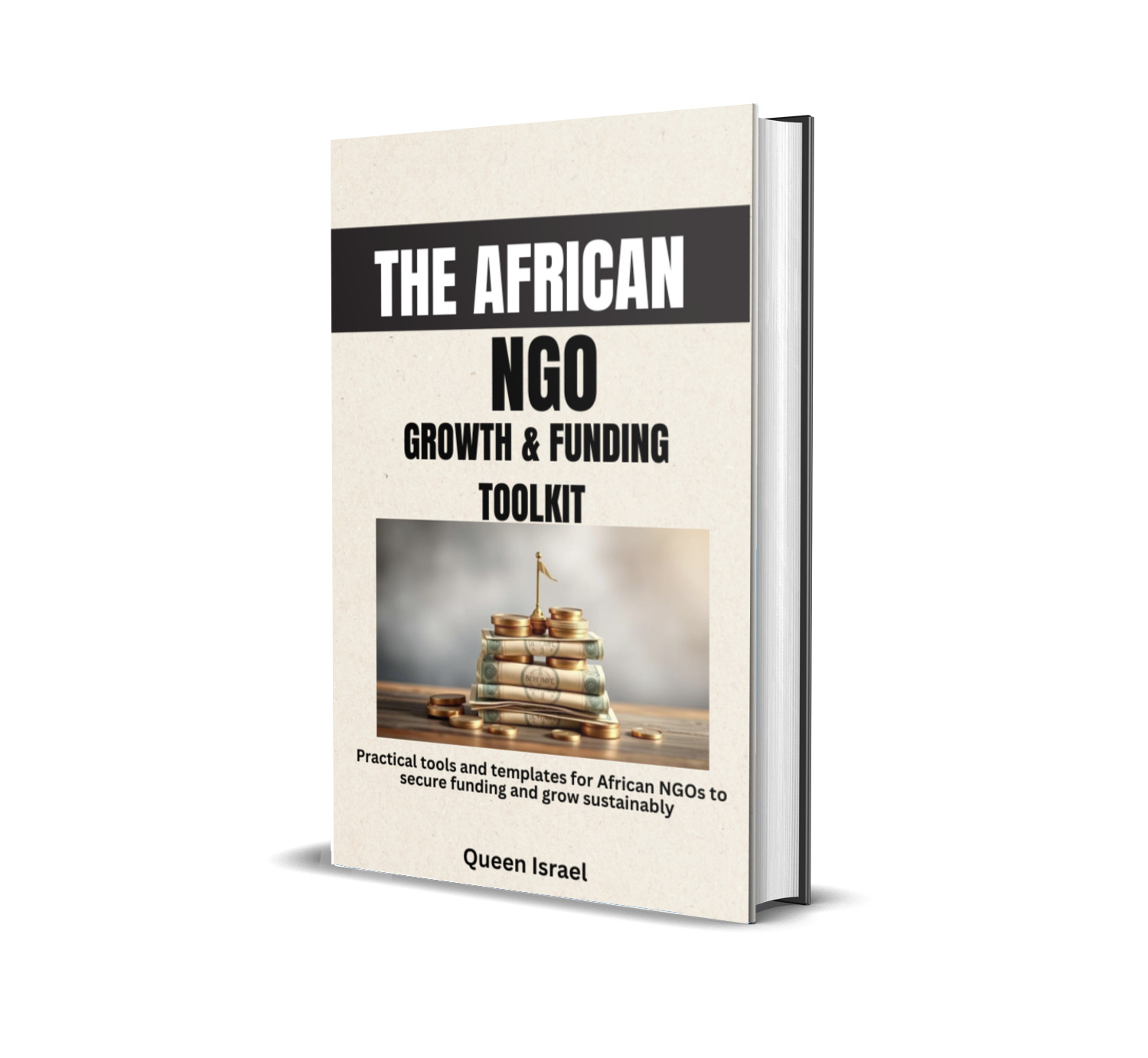Donors Don’t Fund Good Ideas—They Fund Great Proposals
Here’s the truth that separates well-meaning NGOs from winning ones: it’s not always the best project that gets funded—it’s the best-written proposal.
Donors aren’t on the ground with you. They don’t see your impact firsthand. What they see is paper. So, if your proposal doesn’t clearly communicate competence, clarity, and credibility, even your best idea can end up rejected.
But the good news?
Writing a donor evaluation–ready proposal is a skill—and you can learn it.
Let’s walk through a simple, practical, and proven step-by-step system to help your African NGO move from overlooked to overfunded.
Step 1: Start With Donor Research (Not Writing)
Before you write a single word, you need to answer one question:
“Who exactly are we writing for?”
Most failed proposals start with the wrong audience. You can’t win if you don’t know what your donor actually funds.
Here’s what to look for when researching a donor:
- Their funding priorities (education, climate change, gender equality, etc.)
- Geographic focus (regions or countries they support)
- Average grant size and duration
- Past funded projects (to see what they like)
- Application guidelines and deadlines
Example:
If the African Women’s Development Fund (AWDF) prioritizes women’s rights and leadership, your proposal on “economic empowerment for single mothers” should directly reflect their mission.
Pro Tip: Treat donor research like matchmaking. You’re not just looking for money—you’re looking for alignment.
Step 2: Craft a Strong Executive Summary
Your executive summary is your first impression—and sometimes your only one.
Reviewers might skim 100 proposals in a week. If your summary doesn’t grab them, the rest of your proposal won’t matter.
Here’s what to include:
- A one-line description of your project goal.
- The problem you’re solving (with data).
- Who will benefit and how.
- The amount of funding requested.
- Expected outcomes.
Example:
“HopeRise Foundation seeks $75,000 from the MasterCard Foundation to equip 300 rural youth in Ghana with digital skills and job placement support, addressing the 45% unemployment rate among graduates in the region.”
Clear. Concise. Donor-aligned.
Pro Tip: Write your executive summary last—after the rest of your proposal is complete. That way, it perfectly summarizes your project.
Step 3: Define the Problem Clearly (With Evidence)
Your problem statement should answer: What issue are we solving, and why does it matter now?
Most NGOs fail here because they rely only on emotion or generalization:
“Our people are suffering due to poverty.”
Instead, use data and local insights:
“In Borno State, 63% of internally displaced women lack access to basic education, reducing their employability and perpetuating cycles of dependency.”
Support your statement with:
- Local statistics (UN, World Bank, or national data)
- Testimonials or community voices
- Past reports or needs assessments
Pro Tip: Donors love context. Show them you understand the problem better than anyone else.
Step 4: Set SMART Objectives
SMART stands for Specific, Measurable, Achievable, Relevant, and Time-bound.
Your objectives should show clear intent and measurable results.
Example:
“To train 200 smallholder farmers in Kaduna State on climate-smart agriculture by December 2025, leading to a 20% increase in crop yields.”
That’s specific and measurable.
Avoid vague objectives like “Empower farmers to do better.” It’s untrackable and weak.
Pro Tip: Keep 2–4 clear objectives maximum. Donors prefer focus over fluff.
Step 5: Design Activities That Lead to Results
Now that you’ve defined what you want to achieve, show how you’ll get there.
Think of this as your project roadmap.
Example for the farmer training objective:
- Conduct baseline assessment (Month 1)
- Recruit and train 10 agricultural extension officers (Month 2)
- Facilitate 5 training workshops across communities (Months 3–6)
- Distribute organic fertilizer and seed kits (Month 7)
- Conduct follow-up visits and monitoring (Months 8–12)
Each activity should link to your objectives logically.
Pro Tip: Always show sequencing—funders want to see you’ve thought through the “how,” not just the “what.”
Step 6: Build a Logical Framework (Your Proposal Backbone)
The logical framework (logframe) is the heart of a donor evaluation.
It shows how inputs lead to activities, which produce outputs, outcomes, and impact.
Here’s a simplified example:
| Level | Description | Indicator |
|---|---|---|
| Goal | Improved food security in Kaduna | % reduction in hunger index |
| Outcome | Increased farmer productivity | % increase in yields |
| Output | 200 farmers trained | Training attendance reports |
| Activities | Conduct workshops, distribute inputs | Training reports, photos |
Pro Tip: Reviewers love clarity. A clean logframe can be your secret advantage.
Step 7: Create a Realistic Budget
Donors don’t just check what you’re asking for—they check how you’ll spend it.
A donor evaluation-ready budget should:
✅ Match your activities
✅ Use clear cost categories (training, personnel, logistics, M&E)
✅ Include justifications for each cost
✅ Avoid suspicious rounding or vague “miscellaneous” items
Example:
| Item | Unit Cost (USD) | Quantity | Total | Justification |
|---|---|---|---|---|
| Trainer Fees | 250 | 10 sessions | 2,500 | Professional trainer for workshops |
| Venue Hire | 100 | 5 events | 500 | Local community centers |
| M&E Consultant | 1,000 | 1 | 1,000 | Independent evaluator |
Pro Tip: Donors prefer transparency over impressiveness. Show them you understand responsible spending.
Step 8: Plan for Monitoring & Evaluation (M&E)
This section tells donors how you’ll track results and learn from them.
Outline:
- Indicators: What you’ll measure (e.g., number of beneficiaries trained, income growth, school enrollment)
- Data collection tools: Surveys, interviews, focus groups, field visits
- Frequency: How often you’ll measure (monthly, quarterly, annually)
- Responsibility: Who will handle M&E
Example:
“The M&E Officer will conduct baseline and endline surveys to measure changes in beneficiaries’ income levels, supported by quarterly progress reports.”
Pro Tip: Include a small budget line for M&E—it shows professionalism and accountability.
Step 9: Integrate a Sustainability Plan
One of the biggest donor evaluation questions is:
“What happens when the funding ends?”
Your answer shouldn’t be “We’ll look for more donors.”
Show a real sustainability path, like:
- Training local leaders to take over
- Setting up income-generating ventures
- Establishing community ownership
- Partnering with local government for long-term support
Example:
“After project completion, trained youth will form cooperatives supported by local microfinance institutions, ensuring continued access to capital and markets.”
That’s sustainability funders love.
Step 10: Strengthen Your Organizational Profile
Donors fund organizations they trust.
Show that you have the team, systems, and experience to deliver results.
Include:
- Brief history and mission
- Key achievements
- Past projects and partners
- Governance structure
- Financial management system
Example:
“Since 2018, HopeRise Foundation has implemented 12 community projects across Nigeria, including a $45,000 youth leadership initiative funded by USAID.”
That’s social proof.
Step 11: Review, Edit, and Format Professionally
This final step separates amateurs from experts.
Before you hit “submit,” review your proposal for:
- Clarity and flow
- Grammar and spelling
- Consistent formatting
- Donor-specific language
- Proper attachments (budget, logframe, organizational documents)
Pro Tip: Always have an external reviewer check your proposal. A fresh pair of eyes can catch what you missed.
Bonus Step: Present With Confidence
If the donor asks for a presentation or interview, be ready to:
- Summarize your proposal in 3 minutes
- Highlight your results, not activities
- Show photos, short stories, or success data
- Express gratitude and readiness to partner
Confidence tells donors your NGO isn’t just capable—it’s credible.
Final Word: Donors Don’t Fund Hope—They Fund Readiness
If your proposal can clearly answer these questions:
- Is this relevant to the donor’s goals?
- Is the problem clearly defined and evidence-based?
- Are the objectives realistic and measurable?
- Does the budget make sense?
- Can this NGO actually deliver?
Then congratulations—you’ve just written a donor evaluation–ready proposal.
Your Next Step: Don’t Just Compete. Stand Out.
Writing winning proposals isn’t luck—it’s strategy, structure, and storytelling combined.
Every week, Nonprofit Navigator Africa shares powerful donor insights, funding opportunities, and proposal strategies designed specifically for African NGOs ready to grow and win big.
👉 Subscribe today and get your free Donor-Ready Proposal Checklist inside your welcome email.
📩 Join Nonprofit Navigator Africa Newsletter Now — because your next proposal deserves to win.





